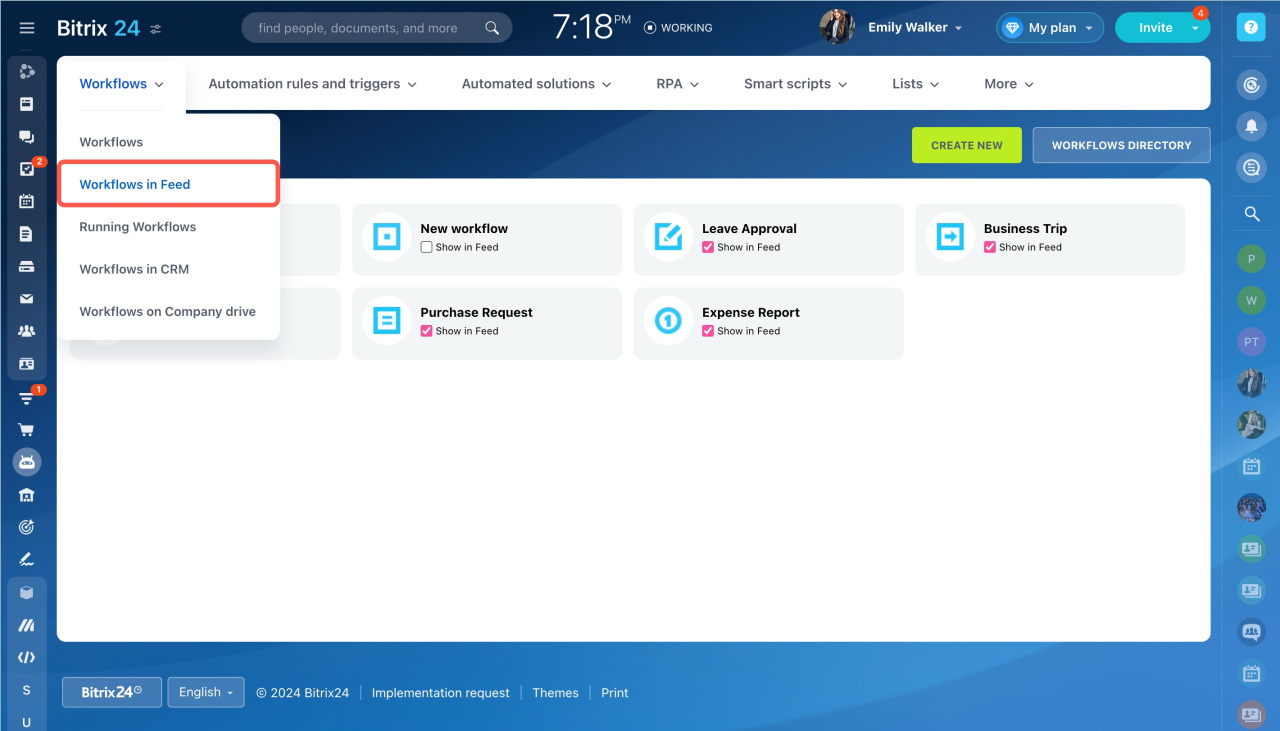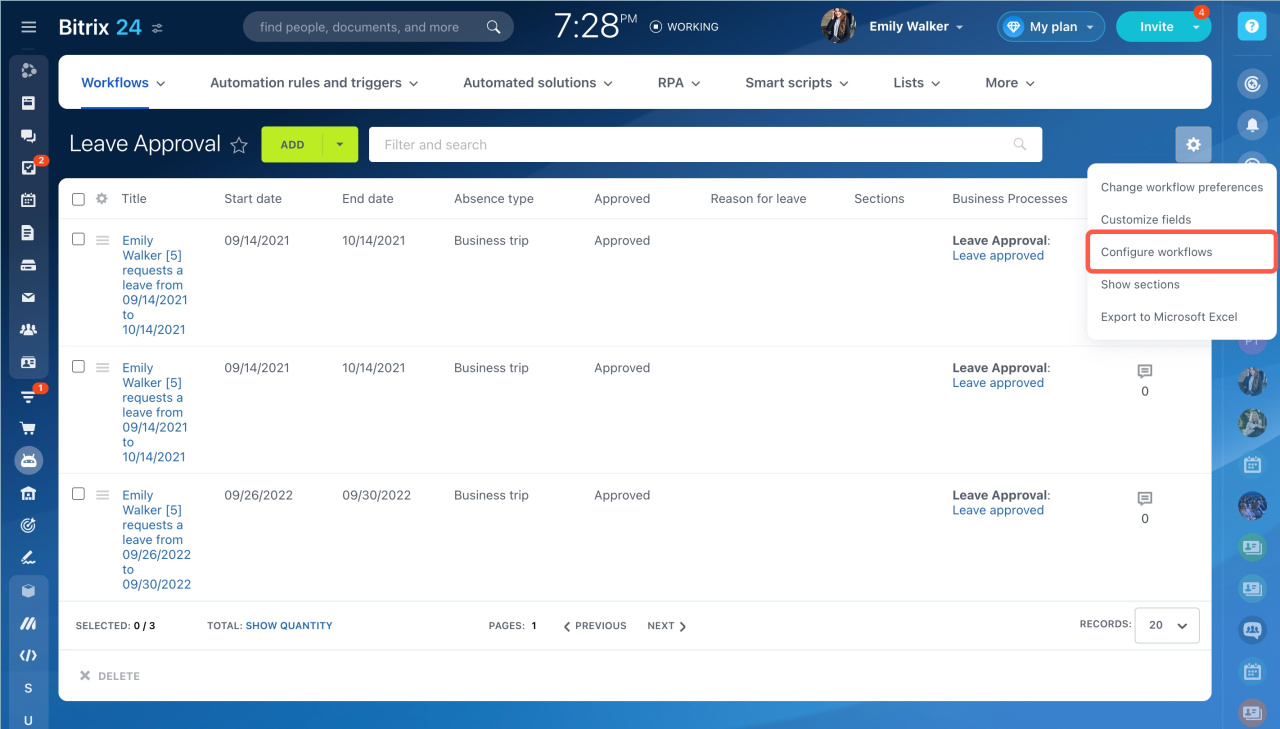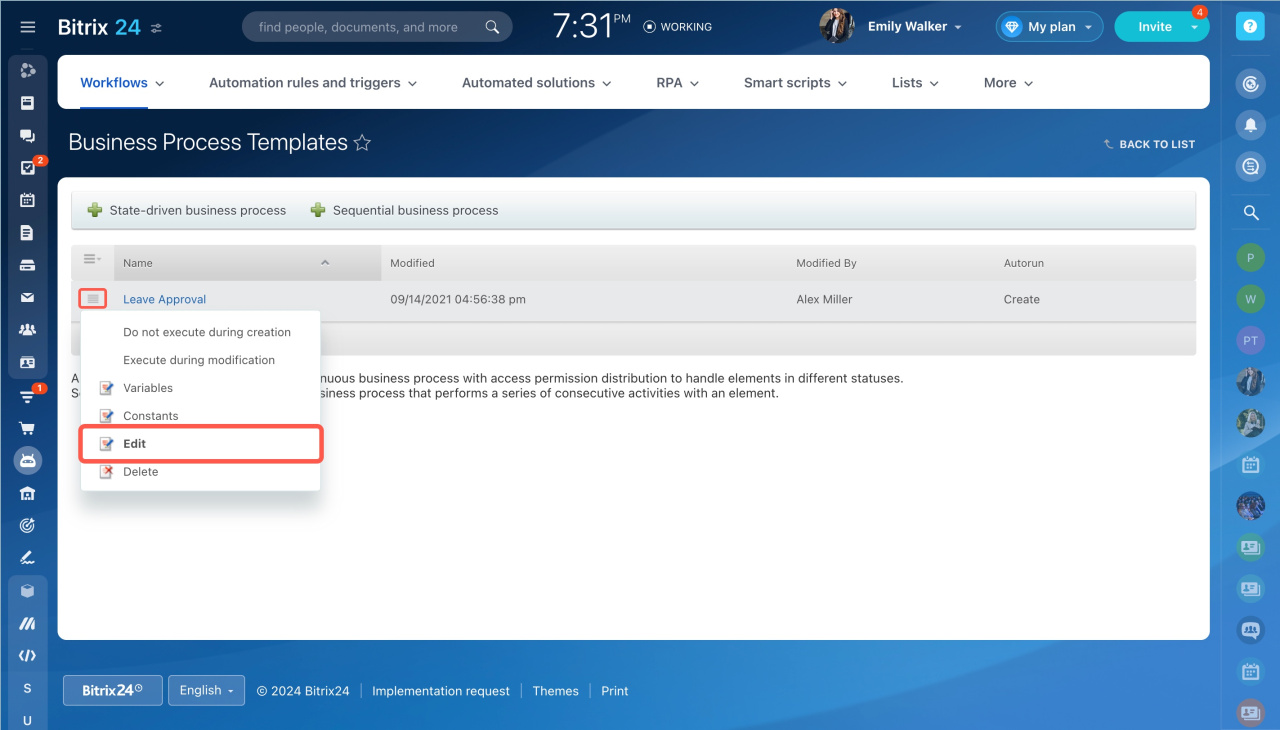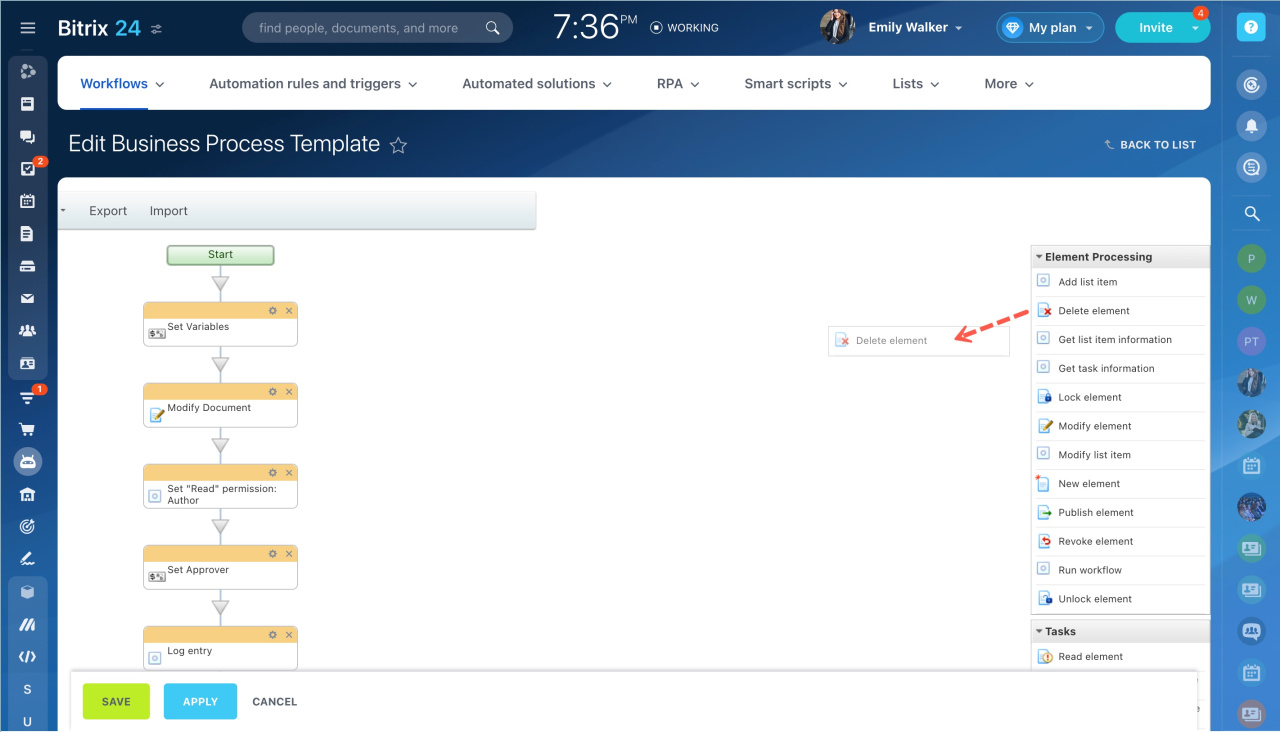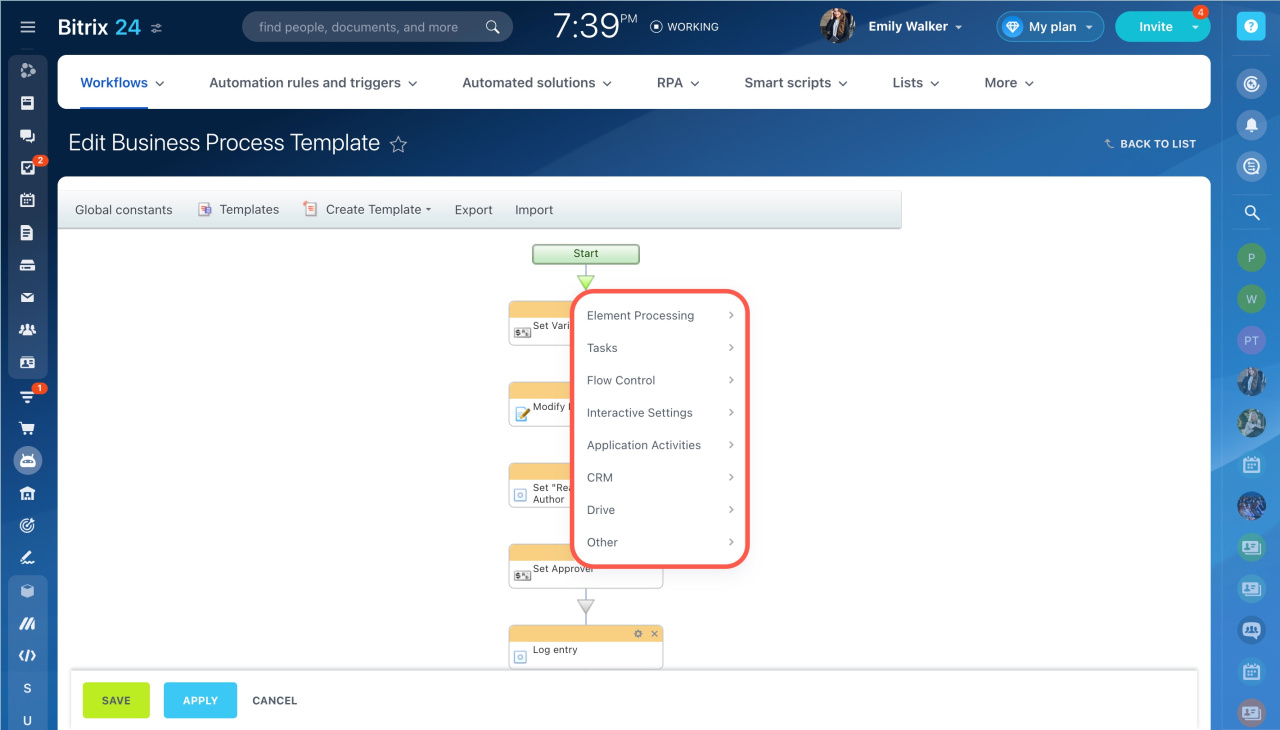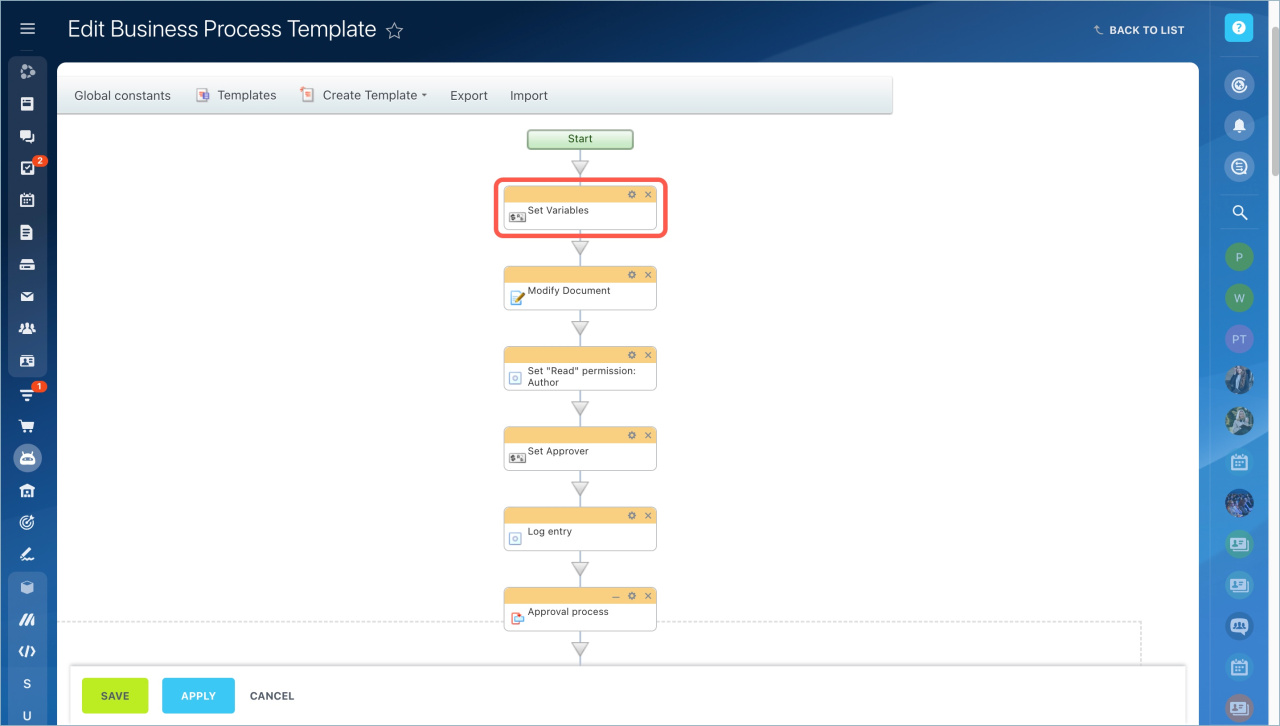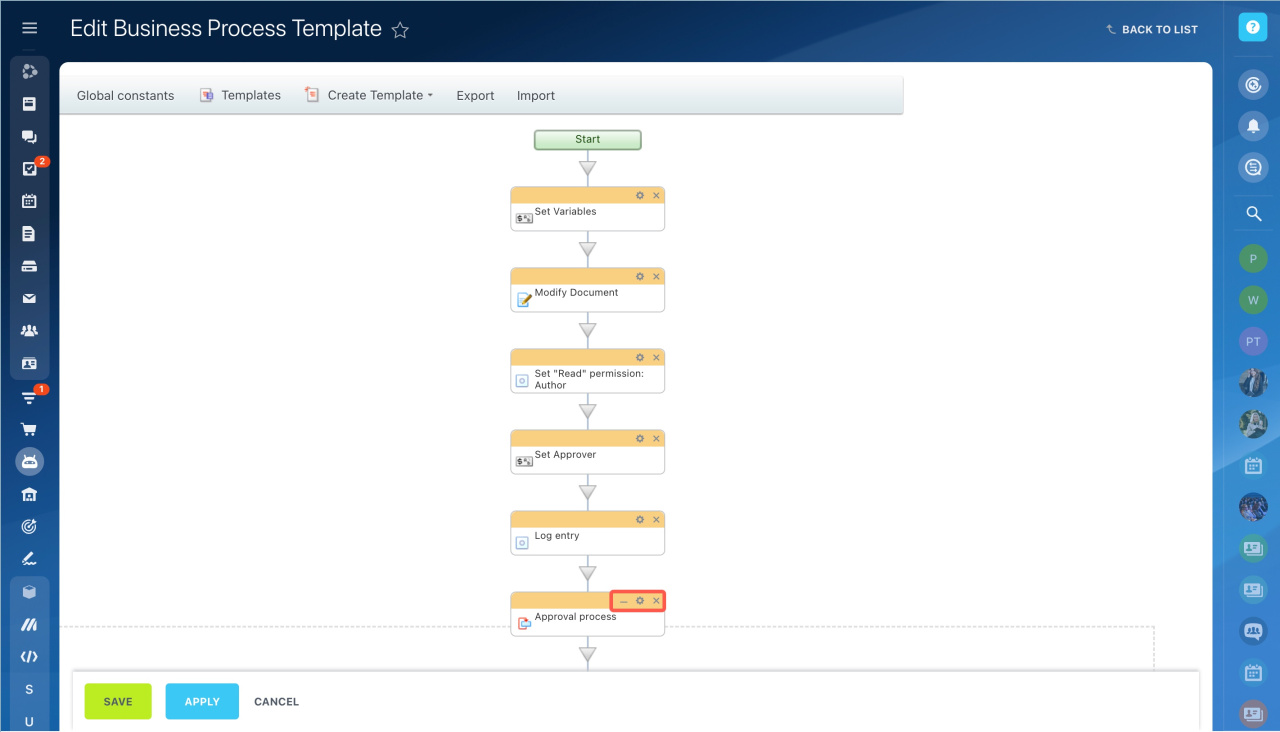Workflow Designer is a visual tool that allows you to create and edit templates for workflows.
Starting workflow designer
Go to Automation - Workflows - Workflows in Feed and select a workflow.
Only the user with administrative rights can edit workflows.
Then click Actions and select Configure workflows.
Click on the business process template to edit it in the Workflow designer.
Work in Workflow designer
To add a required activity to the business process template, drag it from the list to the place where you want to insert the new item.
Alternatively, you can click the arrow to open a menu with the selection of activities. Once you have selected an activity from the menu, it will be inserted.
The template constructor area is different for sequential and status-driven business process templates. A status-driven scheme is constituted by multiple sequential processes, an individual editor is used to modify each of the subprocesses of a status-driven template.
Status Driven Business Process Template
Working with activities
Each activity is displayed as a block placed in a sequential scheme of the business process template.
You can perform the following actions with the activities:
- Click the cross icon to delete an activity.
- Click the settings icon to edit the activity parameters.
- Use the collapse button to save space if your template has a lot of activities.
- To copy an activity, hold down the Ctrl button and drag an activity to the place where you want to copy the new item.
Read also:

